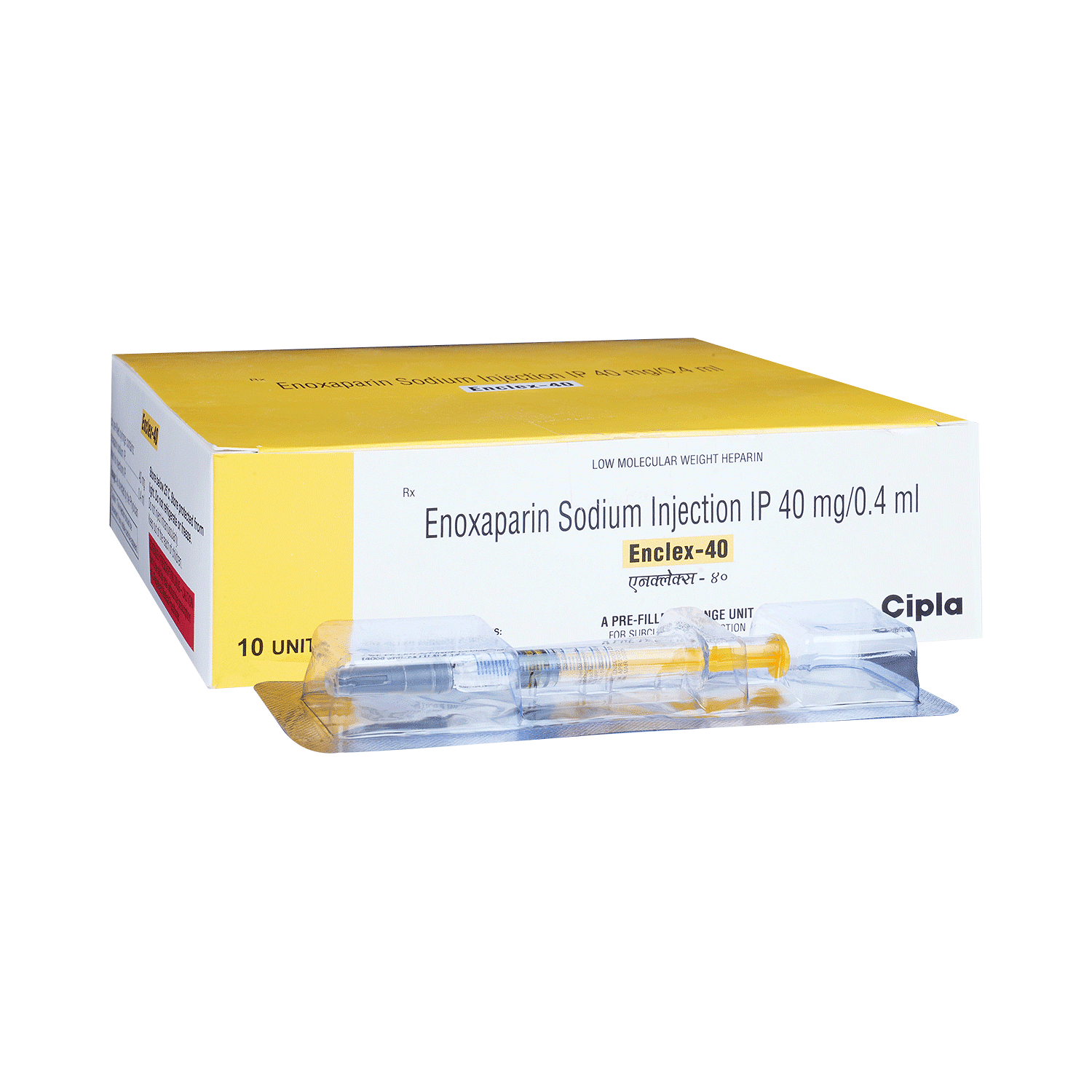
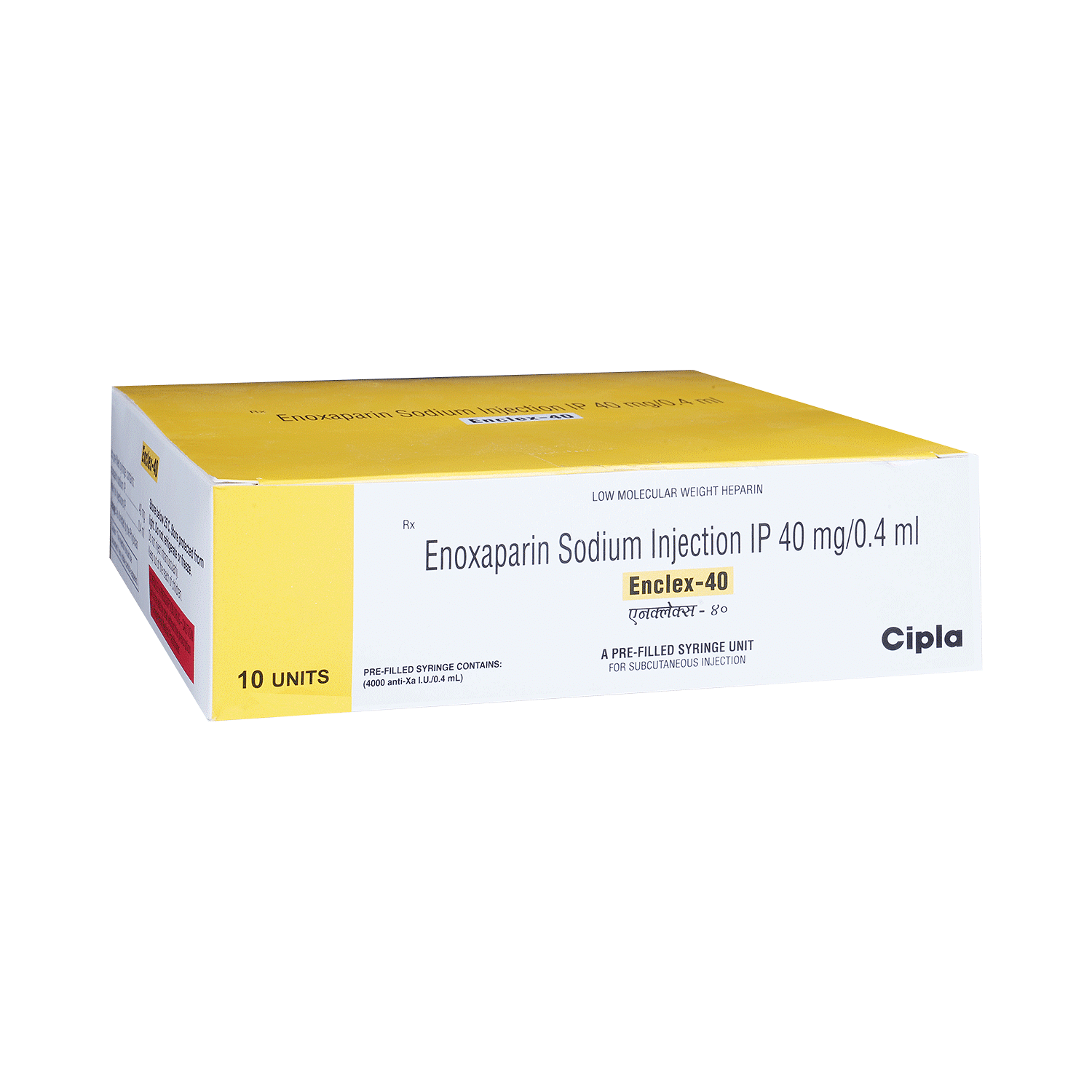
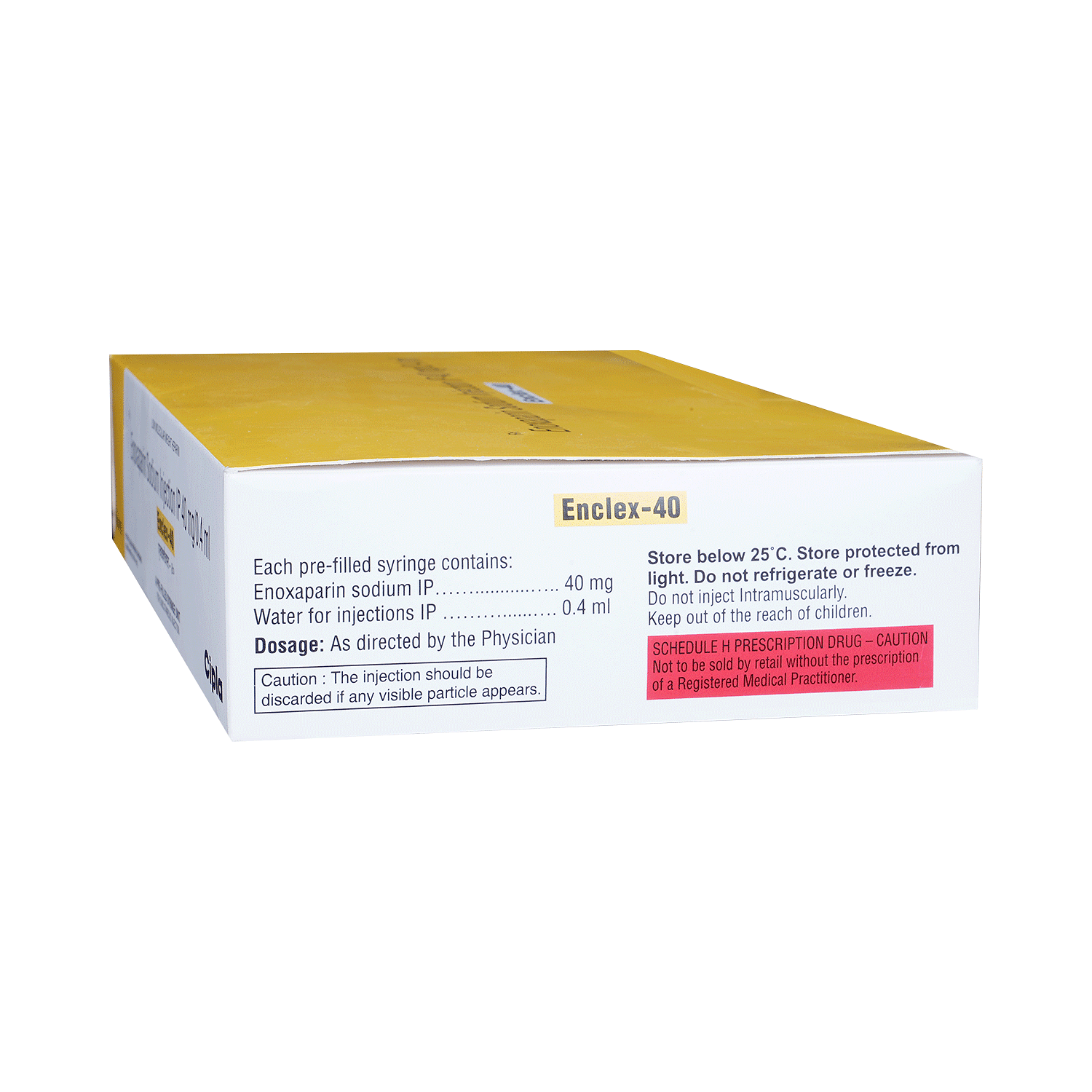
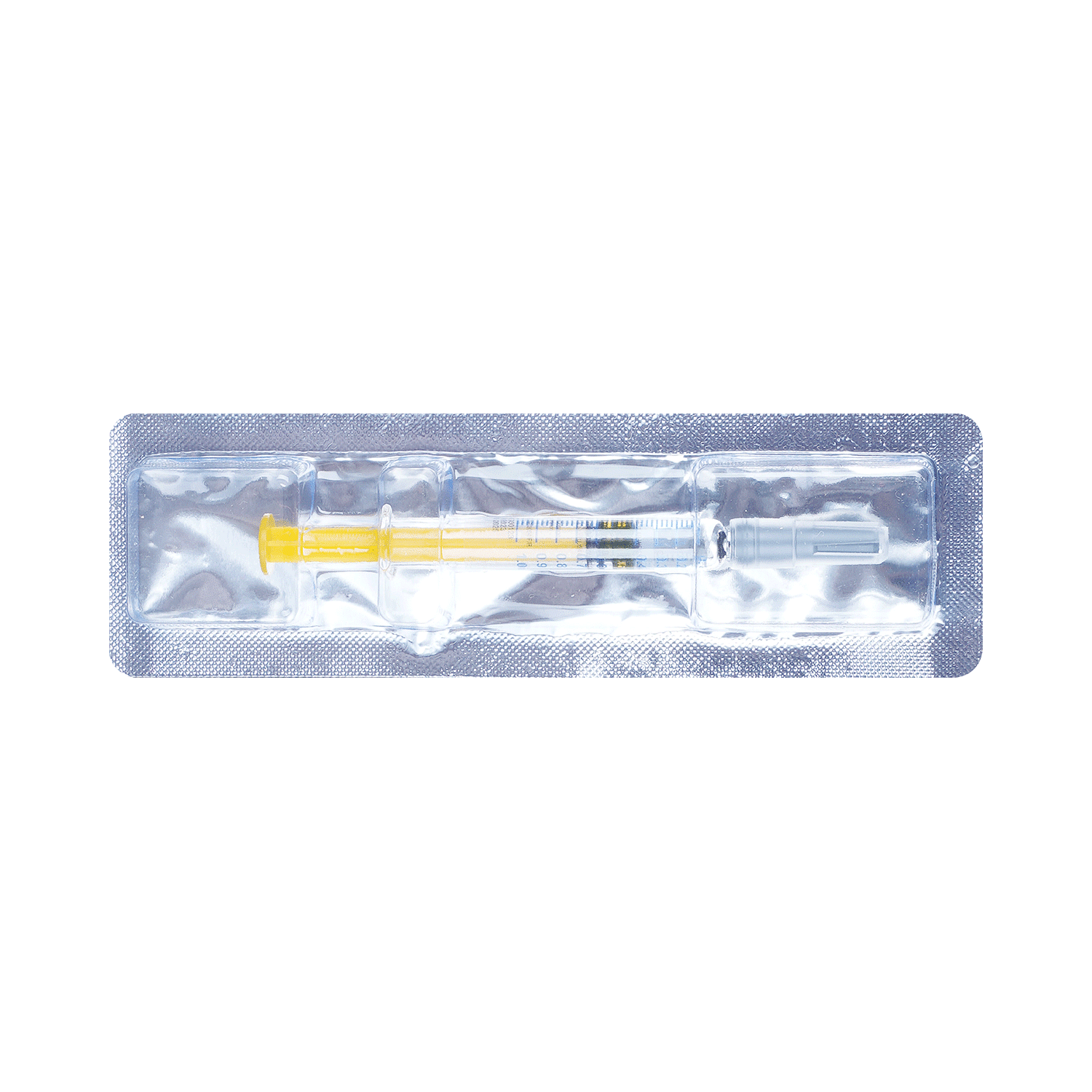
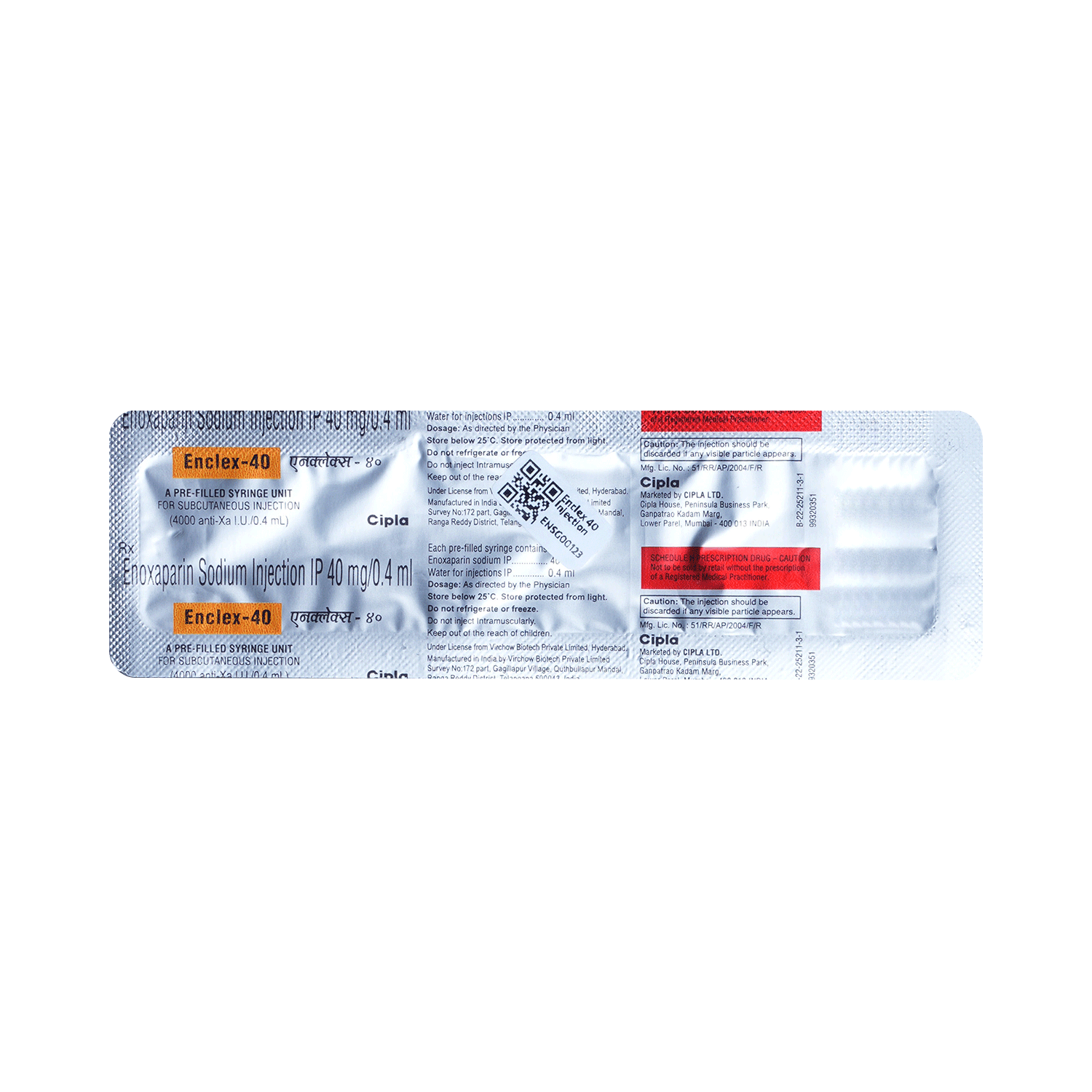
Enclex 40 Injection
Manufacturer
Cipla Ltd
Salt Composition
Enoxaparin (40mg)
Key Information
Short Description
Enclex 40 Injection is an anticoagulant used to prevent and treat harmful blood clots.
Dosage Form
Injection
Introduction
Enclex 40 Injection is injected under the skin by a doctor or nurse. It should not be injected into a muscle. The dose and length of treatment are based on your medical condition, your response to the medicine, and what you are being treated for. It may also be based on your age and weight. It is important to keep using this medicine even if you do not notice any symptoms because it is preventing future harm. If you stop taking it, you could get a blood clot. While taking this medicine you should avoid doing things that increase your risk of bleeding or injury.
Directions for Use
Your doctor or nurse will give you this medicine. Kindly do not self-administer.
Safety Information
Side Effects
Injection site pain Bleeding Headache Increased blood platelets Breathing problems Edema Anemia Fever Diarrhea Increased liver enzymes
Alcohol Warning
It is not known whether it is safe to consume alcohol with Enclex 40 Injection. Please consult your doctor.
Breastfeeding Warning
Enclex 40 Injection is probably safe to use during breastfeeding. Limited human data suggests that the drug does not represent any significant risk to the baby.
Pregnancy Warning
Enclex 40 Injection is generally considered safe to use during pregnancy. Animal studies have shown low or no adverse effects to the developing baby; however, there are limited human studies.
Interacting Medicines
Benazepril Candesartan Captopril Clopidogrel
How it works
Enclex 40 Injection is an anticoagulant. It works by inactivating certain blood-clotting proteins. This prevents the formation of blood clots and prevents blockages in the blood vessels of the body.
Quick Tips
You have been prescribed Enclex 40 Injection for the treatment and prevention of blood clots. Enclex 40 Injection increases your risk of bleeding. Be careful while shaving, using sharp objects or cutting fingernails or toenails. Inform your doctor if you are also taking other medicines that increase the bleeding risk like aspirin and NSAIDs. Inform your doctor if there is bleeding from gums, nose or wounds that lasts more than 15 minutes or if blood appears in your urine, stool or vomit. Do not stop taking the medication suddenly without talking to your doctor.
Frequently asked questions
How do you administer Enclex 40 Injection?
Enclex 40 Injection is a medication for subcutaneous administration. Before administering, carefully select a suitable injection site on your skin fold. Gently pinch the area between your thumb and finger to create a fold, then clean the injection site with water and alcohol. With a steady hand, insert the full length of the needle into the fold, ensuring proper depth for optimal drug delivery. Inject the medication while holding the syringe vertically, then discard the used syringe according to your healthcare provider’s instructions. Follow their guidance on using this medication precisely.
What are the conditions where I should be cautious before taking Enclex 40 Injection?
It is important to disclose your complete medical history to your doctor before starting therapy with Enclex 40 Injection. Make sure to inform them if you have any of these pre-existing conditions: a heart valve replacement, gastric ulcer, high blood pressure, diabetes, or kidney problems. You should also mention any past reactions to heparin and recent stroke, brain, or spinal surgery. These medical conditions could influence the potential severity of side effects and complications. Consult your doctor and follow their instructions carefully.
How to store Enclex 40 Injection injections?
Store Enclex 40 Injection vials at a temperature between 25°C and 30°C, and do not freeze them. Multiple-dose vials should be used within 28 days of opening the first time. Discard the injection if any particulate matter or an abnormal color in the solution is observed, or if there is any damage to the syringe itself. Please refer to the medication package leaflet for detailed instructions on using this medication before administering it and consult with a pharmacist for any questions.
Can Enclex 40 Injection be used in heart attack?
Yes, Enclex 40 Injection is utilized to treat chest pain and heart attacks after standard treatment has been implemented. It often accompanies other blood-thinning medications like aspirin. As a blood thinner, it prevents blood clots from forming, thus potentially mitigating further complications and future events.
Is it okay to inject the air bubble in Enclex 40 Injection?
Yes, air bubbles should be injected into the injection site. This process ensures proper medication delivery. Removing air bubbles leads to loss of medication and can alter the prescribed dose.


